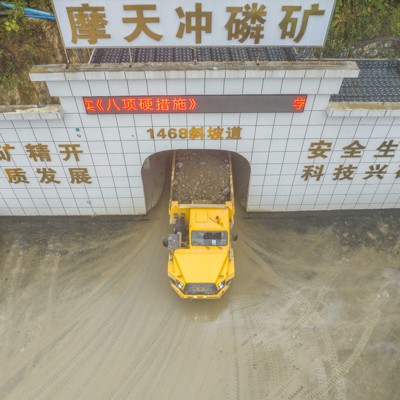China is beginning to restrict exports of rare-earth minerals crucial to U.S. military might—a long-warned-of vulnerability that is becoming an urgent reality.
From tungsten in armor-piercing rounds to gallium in radars, the U.S. Defense Department has built a warfighting enterprise with a supply chain that runs straight through China. But recent developments threaten the Pentagon’s ability to maintain that enterprise.
In early April, Beijing imposed sweeping export controls on seven rare earth elements used in everything from laser-guided weapons to MRI machines. The newly restricted elements—samarium, gadolinium, terbium, dysprosium, lutetium, scandium, and yttrium—require a government-issued license for export, with Chinese officials citing “national security” justifications for the change.
Dan Darling of Forecast International observed earlier this month that “while the latest step taken by China is not an outright ban, this licensing requirement will undoubtedly introduce uncertainty and limit the consistent flow of critical components to manufacturers. This action in an already volatile global marketplace echoes Beijing’s 2010 retaliation against Japan, highlighting the potential for the weaponization of crucial supply chain resources.”
China has long dominated rare-earth mining and processing. But this latest decision tightens the faucet on materials needed for technologies ranging from hypersonic-missile guidance systems to cancer treatments. The measures follow similar export bans issued in December 2024 on gallium, germanium, and antimony—metals used in semiconductors, infrared optics, and armor-piercing munitions.
Since 2010, the Pentagon’s demand for components containing five critical minerals—antimony, gallium, germanium, tungsten, and tellurium—has surged, with contracts growing by 23.2% annually and gallium-related contracts alone increasing 41.8% per year. More than 80,000 distinct parts across 1,900 weapons now depend on these materials, or about 78% of all DoD weapons may be affected, according to a new report by the Govini data analytics firm. The Navy leads in dependency, with over 91% of its systems containing at least one of the minerals.
Consider one example, gallium, a mineral that plays a big role in GPS systems as well as radars. “China’s export ban on antimony, gallium, and germanium, parts containing these critical minerals saw prices increase by an average of 5.2% after the ban, compared to procurements of those same parts the few months prior. More specifically, the price for components containing gallium increased by 6.0%, those with antimony by 4.5%, and germanium by 1.6%. All other parts increased by an average of only 1.4%.”
But the chokepoint isn’t mining; it’s refinement. The U.S. often ships raw mineral precursors to China for processing and re-imports them as components. With Beijing’s 2024 export bans now expanded to include tungsten and tellurium, that loop is closing. Even antimony mined in Australia becomes unusable for U.S. systems if refined in China. The result: 88% of DoD’s critical mineral supply chains are exposed to Chinese influence.
Consider this: nearly all antimony used in key platforms such as the F-16, Arleigh Burke-class destroyer, and Minuteman III missile passes through China at some stage of processing. Only 19% is accessible without Chinese intermediaries. The strategic cost is already measurable—prices for gallium-containing parts jumped 6% within three months of the bans; antimony parts rose 4.5%, while all other DoD parts rose just 1.4%.
Even if the U.S. escapes dependency on these five minerals, more vulnerabilities await. Magnesium—essential for airframes and missiles—is dominated by China and lacks a U.S. stockpile. The same goes for graphite and fluorspar, which are critical to rocket propulsion, lasers, and nuclear fuel processing.
The report suggests a multi-front response. First, revive domestic processing capacity. The U.S. still has zero domestic sources for gallium, germanium, and tungsten, but recent federal investment has begun to yield results. For example, the Kennecott mine in Utah has helped cut tellurium import reliance from 95% in 2019 to just 25% in 2023
Second, the government must exploit mineral companionality—the fact that critical minerals often occur alongside others. A zinc mine in Tennessee could soon yield 30 tons of germanium and 40 tons of gallium annually, nearly matching China’s 2022 global exports of the same materials. But tapping these sources requires regulatory reform: most mining permits ignore companion minerals, delaying extraction by years.
Third, use artificial intelligence and software to discover untapped byproducts across the U.S. industrial base—bringing overlooked commercial suppliers into the defense ecosystem. Finally, strategic stockpiles must grow—and in some cases, be established for the first time. Gallium and tellurium, for instance, still have no government reserves despite their critical status. DARPA has hired AI company HyperSpectral to do just that.
As the report concludes, “America’s dependence on China for critical minerals represents a glaring and growing strategic vulnerability.” Unless addressed, that vulnerability may soon define the limits of U.S. deterrence—not in dollars or troop strength, but in elemental scarcity.
Read the full article here








Leave a Reply